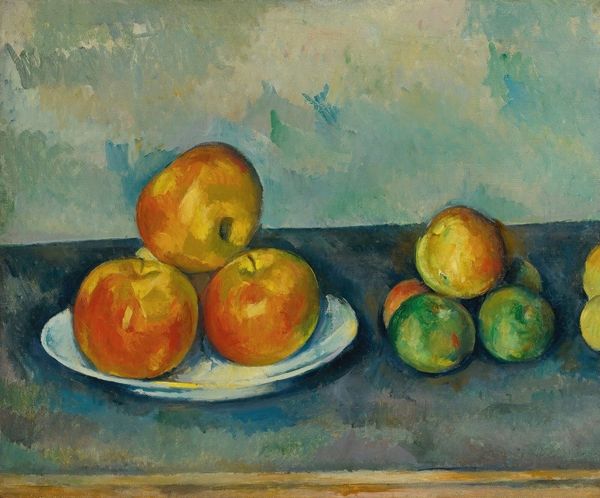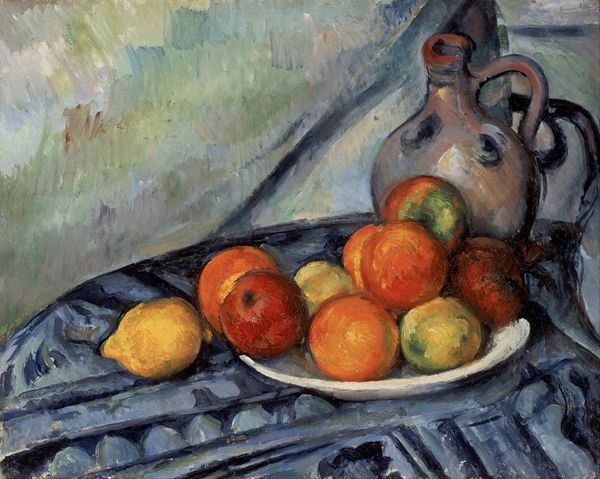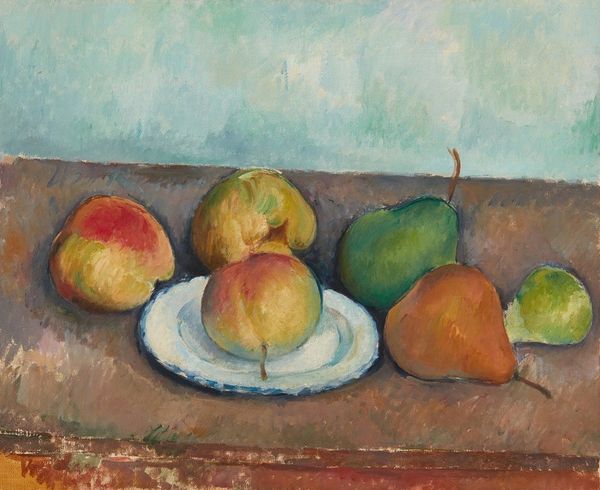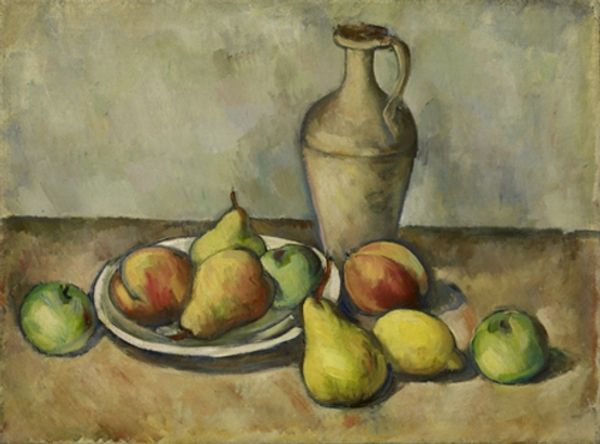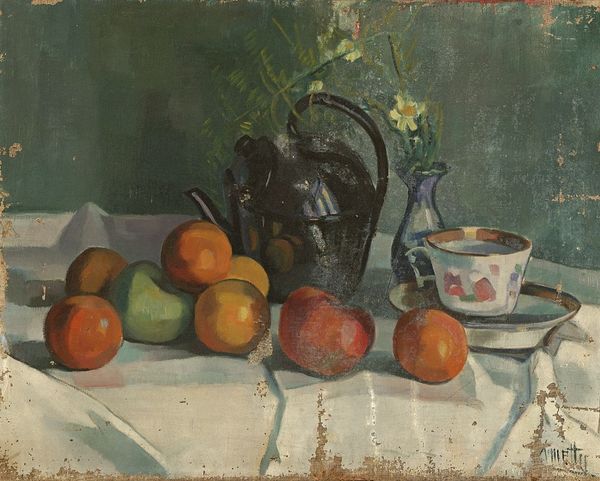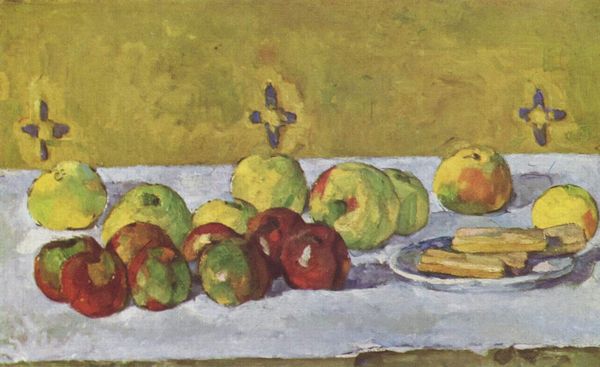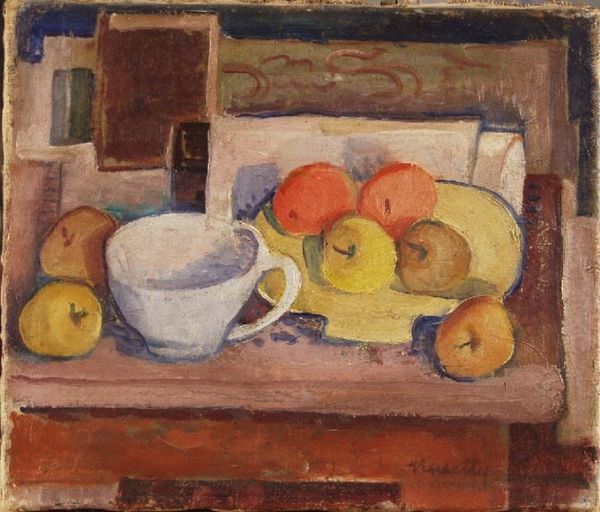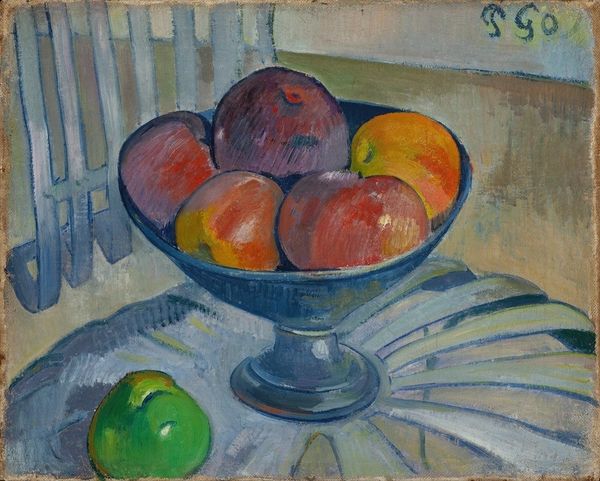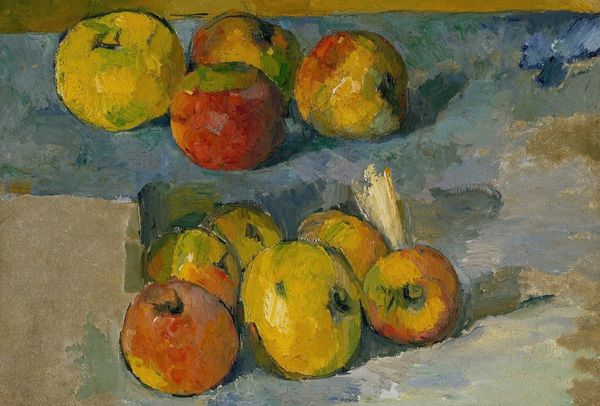
oil-paint, impasto
#
oil-paint
#
oil painting
#
impasto
#
geometric
#
post-impressionism
Copyright: Public Domain: Artvee
Editor: Here we have "Pichet et fruits sur une table," or "Pitcher and Fruit on a Table," an oil painting by Paul Cézanne. I'm really struck by how solid and geometric everything seems. What do you see in this piece, looking at it with fresh eyes? Curator: I see a dialogue between permanence and transience, played out through symbols. Consider the pitcher: a vessel, representing containment, memory, and perhaps even the subconscious. It's weighty, solid, enduring, whereas the fruit signify the fleeting nature of life, their ripeness hinting at decay. Notice how Cézanne renders them almost as geometric forms. Do you see a connection? Editor: I think so! They're both geometric, yes, but in different ways. The pitcher feels like stable geometry, a cylinder and circle, but the fruit are…softened. So, you see the pitcher as, like, the mind, and the fruit as more…feelings, maybe? Curator: Precisely! Cézanne invites us to contemplate how we order and contain experience – the mind seeking to classify and understand the fleeting sensory impressions represented by the fruit. He’s freezing a moment, examining it. What kind of fruit do you think those are and what associations might he hope to evoke through his selection? Editor: I see apples, oranges… some maybe unripe fruit as well, and perhaps that lack of easy ripeness relates to that struggle to hold something for more than its moment… Thank you! I now feel invited to pause, examine my present, but also not feel bad when it, inevitably, drifts to a memory. Curator: And Cézanne gives us permission to find meaning in both the tangible and the intangible, accepting change as a constant companion.
Comments
No comments
Be the first to comment and join the conversation on the ultimate creative platform.
